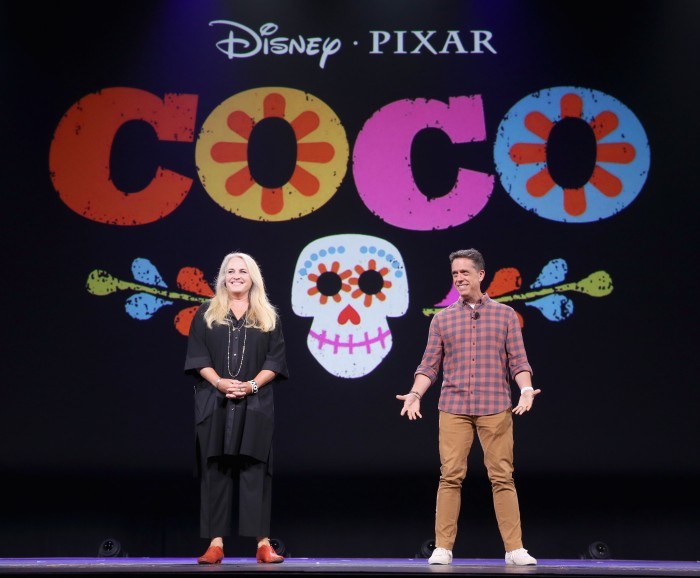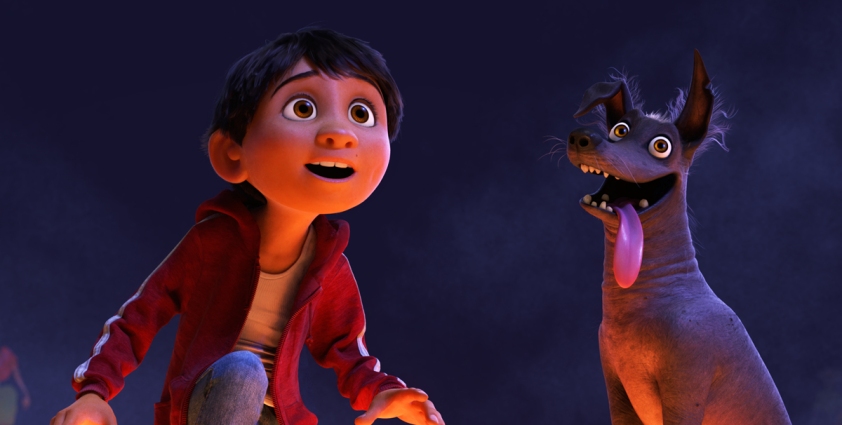Sugar Skull Anti-stereotype Smoothie
No stereotypes allowed. Day of the Dead is already pretty awesome but when you throw in some genuine representation, a story with depth, and a mindful production, sweet dang. I mean, if you like stereotypes you should probably steer clear. Day of the Dead isn’t for sale…right? Right?
Disney is the definition for magic and fantasy, its animated films act like thresholds by which one can be transported into extraordinary worlds. In such worlds, dreams are fulfilled, princesses find their noble princes, puppets become real boys, and animals become famous jazz musicians. Mickey and friends promise that each wish will be fulfilled no matter how big or small. All a child needs to be is American, or in the very least, he or she must embody American ideologies. Despite the allure of wish-fulfillment, magic, and fantasy, the world of Disney isn’t for everyone. Even with the release of 2009’s The Princess and the Frog and the introduction of Elena of Avalor as a Disney princess, a long history of “ethnic” caricatures leaves much to be desired.
As a child, I was enraptured by the magic of Disney and could not help but search for characters who truly reflected me, my family, my friends, and my neighbors. I searched to no avail, none of the characters looked like me, or had families that looked like mine. None represented my experience as a Latina, or my friends’ experiences as Asian Americans or African-Americans. All we had were caricatures, caricatures that improperly reflected the diversity of my world, caricatures that left me feeling shame. I quickly bought into the idea that I was an “other,” and just like King Louie in the Jungle Book (1967), I wanted to be like them. I wanted to be 100% American. Even today I still long for a proper reflection of me and of the people around me. I still long for validation.
On August 14th, 2015 during Disney’s D23 Expo, the new title for the “Untitled Pixar Movie About Dia De Los Muertos” was announced. The film would be called Coco and its main protagonist would be a 12 year old Mexican boy named Miguel.

Coco, in theaters November 22, 2017
According to Disney, Coco “is the celebration of a lifetime, where the discovery of a generations-old mystery leads to a most extraordinary and surprising family reunion.” Inspiration for the film came from director Lee Unkrich’s observations of artworks based on Day of the Dead. Such artworks drove him to become invested in the holiday. He conducted research for the film by spending time in Mexico with various Mexican families undergoing Day of the Dead celebrations. Earlier this year, Disney also released a new poster and two trailers for the film, each giving us a look into Coco’s colorful Land of the Dead.
The film looks and sounds promising. I cannot help but be drawn in by Pixar’s beautiful animation and art direction. Yet, I still remain wary. Is the film’s focus on the Day of the Dead a sincere effort to properly represent the holiday and Mexican people? or is it simply a chance to present a colorful, exotic, and “different” culture on a silver screen for audiences to consume? For the latter, this would not be the first time.
We rapidly accept that animated films serve a child’s imagination and sense of fantasy, they establish a sense of adventure and innocence. In other words, animated films are great for children. However, the importance of such films far exceeds simple entertainment. Animated films are essentially teaching machines. They are children’s best teachers. The Disney animated film functions as the apparatus by which “The American Way of life” is transferred, or as Ariel Dorfman and Armand Mattelart describe in their 1971 study How to Read Donald Duck: The Imperialist Ideology in Disney Comics, Disney invites its audience to fantasize about the “other.” What is problematic about Disney products is that they not only embody the “American way of life” but the “American Dream of life.” As Dorfman and Mattlelart suggest, “[i]t is the manner which the U.S. dreams and redeems itself, and then imposes that dream upon others for its own salvation which poses the danger…” The dream forces those in the minority to see themselves the way the U.S. sees them, as lacking power and lacking normalcy (1).
Throughout previous Disney films we can find negative representations of non-dominant cultures and exaggerated class stereotypes. Such is the case for Dumbo (1941), Oliver & Company (1988), Aladdin (1992), and The Lion King (1994) to name a few. In Dumbo, crows appear to have African-American voices, they are depicted as poor, unintelligent, and naive. There are also images related to slavery as African-American workers are shown doing manual labor while a White-American man is in charge. In Oliver & Company, Tito the Chihuahua is portrayed as a Hispanic character who fights, chases women, and hot-wires cars. In Aladdin, Arabs are portrayed as dirty, cheap, and thieving. In the Lion King, Hyenas are portrayed as lower class, poor, hungry, stupid (2).
When it comes to Mexicans specifically, they are often portrayed in Disney films as “hot-blooded” and highly emotional (2).
A prominent Disney character that plays off Mexican stereotypes is Panchito Pistoles, who first appeared in the 1940s as part of The Three Caballeros, a gang comprised of Donald Duck “The American,” Jose Carioca “The Brazilian,” and Panchito Pistoles “The Mexican.” Panchito Pistoles or “Panchito Romero Miguel Junipero Francisco Quintero Gonzalez,” wears a sombrero and speaks with a heavy accent.
The gang appeared in the Saludos Amigos (1942) and The Three Caballeros (1944) subsequently. These films are now known as “Good Neighbor” films, as they were produced with the intent to “foster goodwill between U.S. and Latin American audiences” (1). Although they were meant, in part, to dispel negative stereotyping of Latin Americans, they also further promoted inaccurate stereotypes and underscored the unequal relationship between the U.S. and Latin America. As Karen S. Goldman notes in her essay The Three Caballeros: The Representation of Latin America in Disney’s “Good Neighbor Films, the films “code the nations and people of Latin America as exotic, idealized, and sexualized.” While the U.S. is depicted as masculine, Latin America is presented as feminized, needing to be dominated (1).
Disney continues to display caricatured representations of ethnic minorities, although less overtly. In The Incredibles (2004), Frozone is depicted as the one-dimensional, ill-tempered, African-American sidekick of the White Mr. Incredible. In The Princess and the Frog (2009), a Cajun firefly speaks in garbled and broken English.
If Coco’s Miguel becomes yet another caricature, Mexican culture will once again be racialized. An entire group of people will be oversimplified into a colorful and exuberant feast to be consumed and then ignored. As a caricature Miguel will only obscure Mexicans and the Mexican diaspora as the “other.” Miguel will only further supplement their exclusion. As anti-Mexican sentiment continues to grow in light of last year’s election, in light of Donald Trump’s promises to build a dividing wall, in light of Trump’s unfortunate comments about the Mexican diaspora, Miguel needs to represent much more than difference. He needs to instead, bring light to the individual experiences of Mexicans and Mexican-Americans.
My hope is that Pixar will again return to the forward-thinking production they are known for, that on November 22, we get the chance to meet a Miguel with depth rather than a two-dimensional stereotype.

Miguel and Dante [Credit: Disney Pixar]


